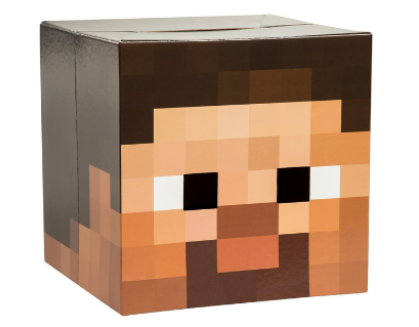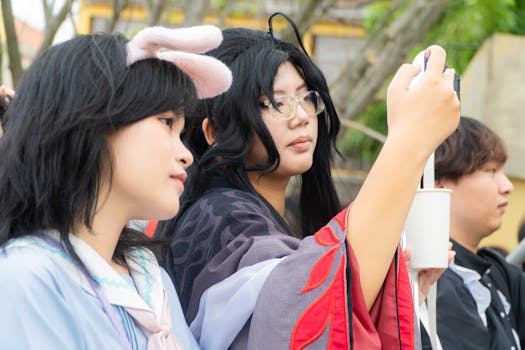Everybody remembers the rush from seeing their favorite game character brought to life in vivid detail at a real-world event, and that excitement never gets old. Cosplay doesn’t just capture characters—it redefines how fans meet, bond, and belong to communities both online and in person.
Gaming culture thrives because people connect through creativity and shared experience, not just the games themselves. Cosplay adds a deeply personal, hands-on layer to these connections, helping enthusiasts shine and recognize each other anywhere in the world.
If you’re curious about the untold impact of cosplay—from sparking friendships to building new skills—this guide reveals actionable ways it links gaming fans everywhere. Dive in and see where you fit in this creative web.
Cosplay Opens Doors for Cross-Cultural Friendships among Gamers
When cosplayers gather at conventions, they break the ice with costume talk instead of personal backgrounds. It doesn’t matter where you’re from if you get the reference.
Connecting in costume makes the first ‘hello’ easier. If two people cosplay the same character, a natural script unfolds: trade tips, pose for photos, laugh, and exchange contact info for later.
Posing Together Breaks Barriers
Cosplay photographers usually say, “Hey, stand together!” when they spot matching costumes. Sharing a pose creates a sense of belonging and kicks off conversation without awkward pauses.
A cosplayer once said, ‘I met my best friend because we were both dressed as different versions of Cloud Strife.’ Adding props and inside jokes makes each moment more memorable and encourages new conversations.
Remember this phrase when you’re shy: ‘Nice prop—how did you make it?’ It works worldwide as an instant opener that signals respect for effort and passion.
Workshops Build Trust Quickly
Attending a crafting workshop isn’t about skill level. It’s a shared chance to swap glue-gun burns stories, laugh over fabric mishaps, or ask, ‘What’s your favorite material?’
International fans who can’t speak the same language still bond by helping each other with snaps, adjusting wigs, or just giving a thumbs up after a sewing success.
Even without speaking, pointing at a finished piece and smiling says, ‘I get it; I’ve been there too.’ These small signals lead to deeper communication and invitations to group projects.
| Setting | Barrier Broken | Outcome | Action Step |
|---|---|---|---|
| Convention Floor | Language | Shared photos | Ask to pose together for instant rapport |
| Workshop Room | Culture | Collaborative builds | Trade crafting tips in gestures or simple words |
| Online Streaming | Geography | Virtual friendships | Join international costume streams and comment on builds |
| Photo Meetups | Shyness | Group confidence | Echo someone’s pose to feel included |
| After-Parties | Age | Mentor–mentee bonds | Share your story or invite newcomers in |
Shared Costumes Spark Skill Swaps and Creative Growth
Building cosplay side by side in groups nurtures skills you might not gain working alone. When someone struggles with armor foam, another steps in with a hack that’s not in any YouTube tutorial.
Cosplayers rarely gatekeep. It’s common to hear, ‘Try this adhesive, it holds better and dries fast,’ which shortens your trial-and-error journey and leads to better results.
Quick-Start Guides Build Confidence
Group chats offer real-time support. Instead of sifting forums, a teammate replies, ‘Pin the pattern like this,’ and posts a diagram. This reduces frustration and provides instant validation.
Lists of tried-and-true shortcuts emerge, helping newbies avoid classic mistakes: ‘Prime armor with Mod Podge before paint,’ or ‘Sew linings twice for con durability.’
- Ask for help before getting stuck—others enjoy sharing fixes, and you’ll learn faster.
- Offer your simplest trick in return, even if it feels basic. Every bit counts.
- Record unusual tips you spot during group builds. They come in handy next time.
- Assign skill mentors in group chats. Rotate roles so everyone learns and leads.
- Share timelapses at the end; it encourages collective reflection and pride in growth.
When you document and swap ideas out loud, group confidence climbs the next time a challenge appears. The more you share, the stronger everyone gets.
Global Challenges Encourage Innovation
Worldwide online contests prompt teams to brainstorm armor solutions for intricate characters—think Mega Man or Samus Aran. Group chats light up with frantic sketches and debate: ‘Foam or 3D print? Spray or primer coat?’
High-stakes deadlines push reluctant beginners to take risks: ‘Would metallic felt glue down if I heat-seal it?’ One quick photo or clip inspires five alternate methods and a surge of encouragement from across continents.
- Appoint a timer to manage brainstorm sprints—keep energy and ideas flowing.
- Divide research by parts: one for shields, one for LEDs, another for fabric shopping sources.
- Declare a progress check-in, like ‘Send a photo by Friday,’ and celebrate mini-successes to prevent burnout.
- Switch team leads each round and encourage everyone to share what worked (and what flopped).
- After revealing final builds, break down the biggest lesson for the whole group to carry forward.
These micro-collaborations guarantee that your next cosplay benefits from worldwide trial and error, not just your own.
Cosplay Bridges Gaming Fandoms across Borders and Genres
Crossover cosplays—like a Mario character reimagined with a League of Legends twist—spark new friendships between separate game fandoms. Wearing mashups visibly signals that you’re open to meeting unexpected allies.
Game designers sometimes attend events incognito, checking out how well their characters translate outside the digital world. They’ll quietly note the reception of a creative take, sometimes asking, ‘How did you come up with that?’ to encourage more blending.
Crossover Creations Build Unexpected Alliances
In a bustling lobby, you spot someone in armor that’s half-Spartan, half-Link. Your curiosity leads to a photo request and a costume deconstruction chat. This sparks collaboration between two genre groups that might never have mixed before.
Using crossover cosplay at a meetup encourages introductions and follow-up invitations to different game club events. Both sides grow—one gains fantasy magic ideas, the other learns tactical prop construction.
The alchemy of mashup costumes frequently generates new memes or traditions, like squad walks or dual cosplay themes for the next meetup, which further knit fandoms together.
Digital Avatars Influence Real-World Costumes
Gamers in Asia use augmented reality to mix digital accessories like interactive LED wings onto real cosplays. At LAN parties, others livestream both their costumes and in-game characters for fans worldwide to compare builds in real-time.
This hybrid approach lets people test fanciful ideas without expensive materials, making trendsetting builds more accessible to those on budgets. The virtual/real mix speeds up how quickly new cosplay designs spread from country to country.
Hosts sharing their avatar-inspired costumes inspire messages like, ‘Can you share your rig?’ which starts cross-border collaborations that feel as immediate as a local chat.
Comparing Regional Cosplay Communities in Practice
Cosplayers in Japan focus on precision and honor original designs, while American groups favor large, expressive builds with personal twists. Each approach teaches something valuable if you watch closely and try their methods yourself.
South American groups rally around group ensembles—everyone as different fighters from one game. Europeans share multilingual tipsheets, making event communication more inclusive.
| Region | Main Focus | Community Vibe |
|---|---|---|
| Japan | Accuracy & character faithfulness | Quiet respect; detailed craftsmanship adored |
| USA | Creative expression & spectacle | Bold, loud, big builds and lots of cheering |
| Europe | Collaboration & accessibility | Open tipsharing; multilingual workshops encouraged |
If you study these differences and try a new technique from another region at your next event, you’ll spot immediate improvements and likely win new admirers.
Building Confidence and Belonging through Cosplay
Every finished costume is a badge of effort. Walking onto the show floor in character, you’re saying, ‘I belong here, with these gamers and creators.’ It feels powerful and validating.
Think of cosplay like a team sport: everyone prepares alone, but the cheering, posing, and applause are communal. That participation builds confidence that carries outside conventions too.
One gamer tells friends, ‘I started as shy, but now I run panels and lead meetups because cosplay showed me how to share my knowledge and be seen.’
Parents attending with kids frequently end up joining their children thanks to encouragement from other cosplayers, turning isolated fandoms into family rituals.
The skills earned—organization, public speaking, resilience—follow you into school, work, and every corner of life that rewards showing up as your full creative self.
Everyday Habits That Strengthen Cosplay Connections
- Attend local build nights—meet nearby makers, ask to see someone’s progress, and offer to help with tricky steps, no matter your skill level.
- Host online photo threads after events—you’ll recognize new faces, comment on unique builds, and grow friendships with fans from other towns or countries.
- Share honest tutorials, including your failures—help others avoid common pitfalls and create a ripple of gratitude that comes back later.
- Join regional or language-specific chats—this opens doors to event invites, tip exchanges, and group orders for materials you can’t find locally.
- Create open callouts: ‘Looking for group builds?’ This sparks networks and lets newcomers plug into ongoing projects easily, without feeling awkward asking.
- Celebrate others’ builds, not just your own—posting congratulatory remarks raises community spirit and introduces you to potential future collaborators.
Practicing these habits ensures you’ll always have friends to ask for advice or show off your latest gear. It makes conventions less intimidating and builds confidence season after season.
The more you contribute, the more you’re recognized—and the easier it becomes to travel or try new gaming genres without fear of being the outsider.
Cosplay’s Cumulative Impact on Gaming Cohesion
When you step back and look at the role cosplay plays, you’ll see a vibrant patchwork of friendships, shared skills, and enthusiasm traveling across continents. It’s not an isolated phenomenon but a daily practice of mutual recognition and inclusion.
Each costume is like a calling card. Whether you built it in a group or alone, it circles back to someone else: a first-timer who’s nervous, a returning expert with a fresh take, or a designer seeking feedback outside their usual zone.
The boundaries between digital and real-life communities blur every time you join a build stream, participate in mashup events, or offer an encouraging word online. Cosplay links thousands of micro-connections into something greater than a sum of parts.
Every handshake, group photo, or costume critique ripples into stronger trust and curiosity, from local shops to global forums. By participating, you fast-track your growth and enrich the community fabric at the same time.
Cosplay’s greatest lesson is the gift of showing up for your fandom—on stage, in chat, at a table with glue guns ready. The bridges you build today will outlast any single convention or costume.

